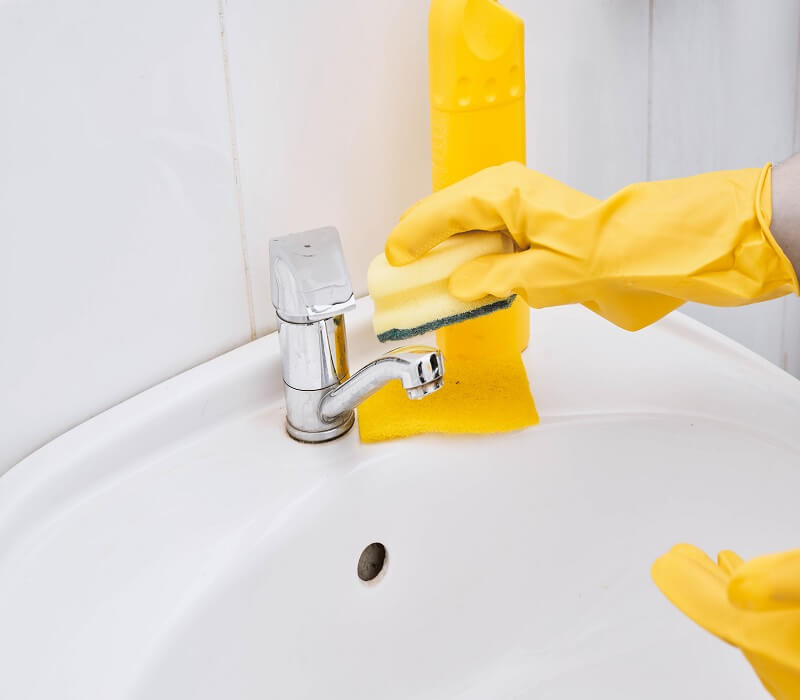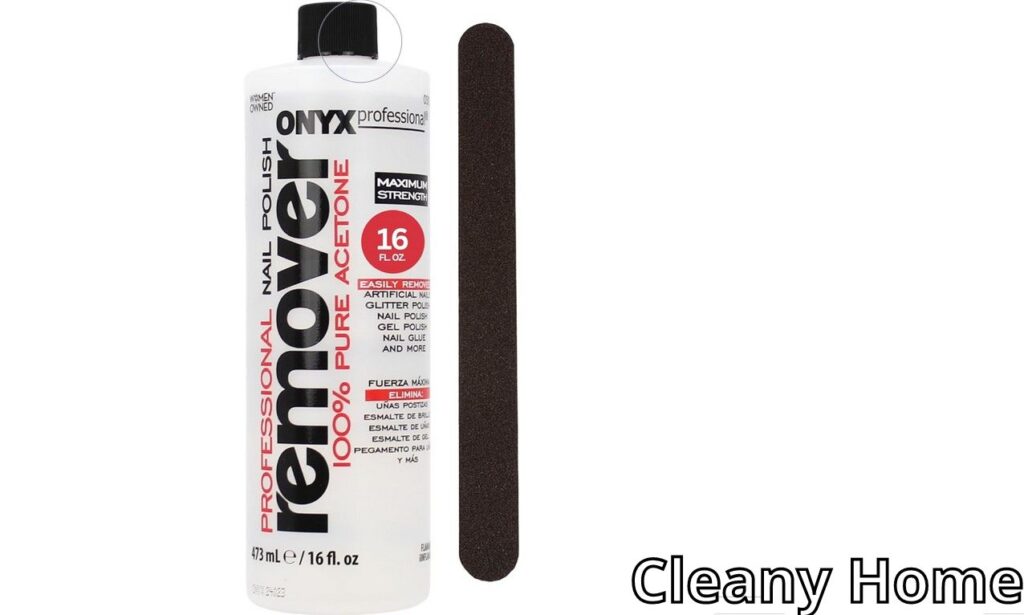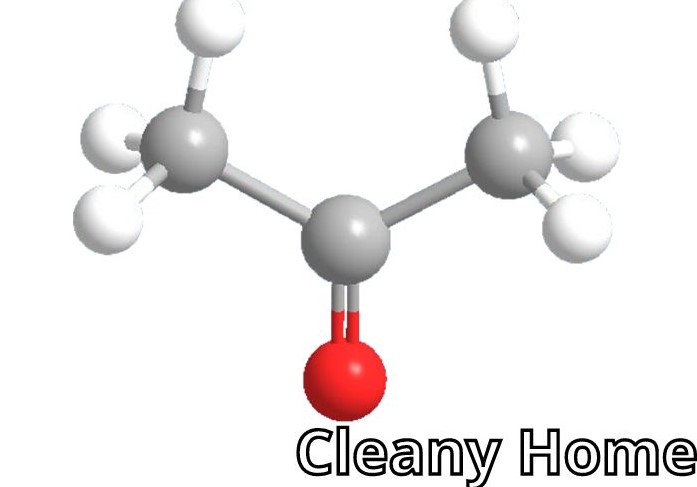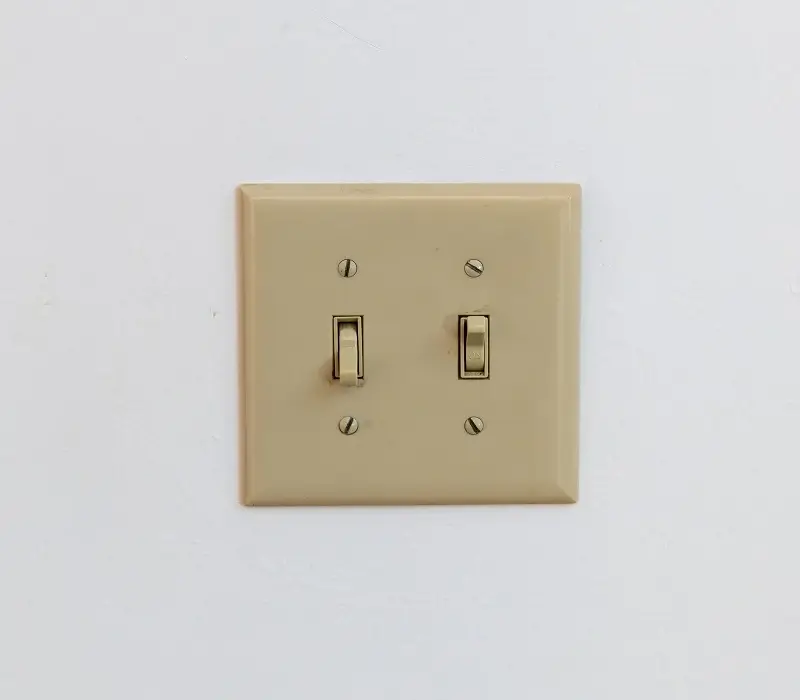
Acetone is a solvent that can save you a lot of time and effort. It’s the perfect option for any stain that refuses to leave your sight. However, the problem that some of us encounter with this product is the residue it leaves behind. Now we will discuss how to remove acetone residue with everyday products. The residues you see aren’t caused by acetone in itself, but rather its contents of impurities.

Right now, what matters the most is to learn how to remove acetone residue. And to do this, we’ve brought you some simple tips you can do yourself. However, before you tackle the residue, we highly recommend testing your chosen product on a remote part of the surface.
Table of Contents
How to Remove Acetone Residue with Everyday Products
Rubbing alcohol
Dab the acetone residue with a cotton ball dipped in rubbing alcohol. After soaking the residue, let it sit for a few minutes before wiping it away.
You can repeat this operation a few times more since rubbing alcohol is safe for most surfaces. But, as we’ve mentioned above, it’s always best to test it on an inconspicuous part of the surface.
If the residue refuses to come off with rubbing alcohol, try isopropyl alcohol instead. These products are not the same; isopropyl alcohol is pure alcohol (100%), whereas rubbing alcohol contains 70% isopropyl alcohol.
If you choose to use isopropyl alcohol, we recommend checking out this fantastic guide by EHS. It’s a must-read as it will provide you with the precautions you need to take when dealing with this product.

Dishwashing Liquid
This technique is straightforward, and you probably already have all you need at home.
In a bowl, add 1/4 teaspoon of dishwashing liquid to each cup of warm water. Dip a sponge or a cloth into the solution and rub the residue.
Lastly, rinse the surface to ensure nothing is left behind.
Dry Cleaning Solvent
If DIY techniques aren’t your strong suit, a commercial product such as a dry cleaning solvent can turn the situation around.
I know that you’ll have to take a drive or a walk to your local grocery store to obtain it, but I can assure you that it’s worthwhile.
Once you’ve got dry cleaning solvent on hand, apply it to a clean white cloth and blot the residue until it’s lifted off the surface. Repeat this procedure a couple more times to get rid of all the residue.
Things You Should Know about Acetone
- Acetone isn’t always to blame for the residues. Sometimes this problem occurs due to the surface being dissolved in acetone. And it only became visible as residue when the acetone had evaporated. Keep in mind that acetone is a powerful solvent that can dissolve both polar and nonpolar substances.
- Some types of plastic cannot withstand acetone due to its powerful chemical composition. As a result, using it on such a surface is more prone to soften, smear, or even dissolve that surface. For example, acetone can easily dissolve polystyrene.
- The best way to protect yourself when dealing with acetone is to wear rubber gloves. Working with this product while bare-handed can cause the skin to become red, dry, or cracked.
- An acetone-based nail polish remover is also a great product for tough stains. However, owing to additional ingredients, nail polish removers can also leave behind residues.
Use one of the aforementioned removal methods soon after applying the product to make sure the surface is residue-free.
Read also: How to Remove Orange Mold in Shower and Bathroom
Conclusion
So there you have it, a list of practical approaches to removing acetone residue. To avoid this problem in the future, make sure to use one of these techniques right after cleaning with acetone.
We hope you’ve learned something from this tiny list of cleaning tips. It’s always a pleasure to read your comments, so make sure to leave us one below sharing with us your thoughts regarding these techniques.
How do you remove acetone damage?
The best way to remove acetone damage depends on the type of surface or material that has been affected. However, in general, you can try using a mild cleaning solution or rubbing alcohol to remove the damage. For more severe damage, it may be necessary to seek professional assistance or replace the affected item.
Does acetone leave a residue?
Acetone is a volatile and fast-evaporating solvent, so it typically does not leave a residue. However, if the acetone is contaminated with other substances, it may leave a residue. Additionally, certain materials may react with acetone and leave a residue behind. It is always best to test a small, inconspicuous area first before using acetone on a larger surface.
Will acetone discolor my clothes?
Acetone can potentially discolor certain types of clothing, especially if the fabric is not colorfast or is sensitive to solvents. It is always best to avoid getting acetone on your clothes or other fabrics.
How do you remove acetone logo from clothes?
To remove an acetone logo from clothes, use rubbing alcohol or a mild detergent and wash according to care instructions. Seek professional assistance for severe damage, and test a small, inconspicuous area first.
What happens if acetone gets on skin?
If acetone gets on the skin, it can cause irritation, redness, dryness, and cracking. Ingesting or inhaling acetone can cause more serious symptoms, and it should always be used in a well-ventilated area. If acetone gets on your skin, rinse with water and seek medical attention if necessary.
We're an affiliate
We hope you love the products we recommend! Just so you know, CleanyHome.com is a participant in the Amazon Services LLC Associates Program, an affiliate advertising program designed to provide a means for sites to earn advertising fees by linking to Amazon.com.

![How to Get Rid of Spiders in the Basement [9 Effective Tips]](https://supercleanworldall.com/wp-content/uploads/2021/07/depositphotos_125531742-stock-illustration-the-pattern-with-spiders.jpg)
